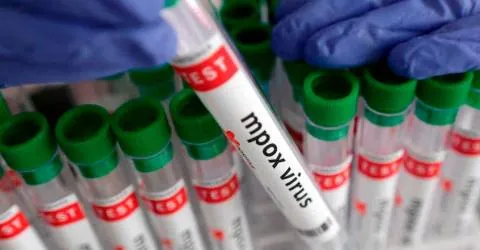
Louisiana Reports First Presumptive Human Case of H5N1: What You Need to Know
2024-12-17
Author: Michael
Overview of the Situation
In a concerning development, the Louisiana Department of Health (LDH) has confirmed the first presumptive positive human case of highly pathogenic avian influenza (HPAI), specifically H5N1, in the state. The affected individual, a resident of southwestern Louisiana, is currently hospitalized and under medical care.
Investigation and Preliminary Findings
LDH's Office of Public Health is actively collaborating with the Centers for Disease Control and Prevention (CDC) to conduct an epidemiological investigation. Preliminary findings suggest that the individual had direct exposure to sick and deceased birds, which are suspected to carry the H5N1 virus.
Understanding H5N1
H5N1 is notorious for causing severe respiratory illnesses among birds and is highly contagious in avian populations. The U.S. has seen outbreaks of H5N1 since 2022, predominantly affecting wild birds and poultry. Alarmingly, as of December 13, 2024, there have been 60 confirmed cases of human infection with H5N1 across the country, primarily linked to close contact with infected poultry and livestock. Fortunately, there has been no record of human-to-human transmission in the U.S., indicating that the general public's risk remains low.
Risk and Recommendations
Nonetheless, individuals working closely with birds, poultry, or livestock, or those engaging in recreational activities involving these animals are at an elevated risk of exposure. To safeguard against H5N1, health officials strongly recommend avoiding direct contact with wild birds and any animals suspected of infection. Furthermore, it is advisable for individuals in high-risk occupations to adhere strictly to safety protocols and hygiene measures to minimize the risk of transmission.
Staying Informed
As we navigate this health concern, staying informed and vigilant is crucial. Regular updates from health authorities will be essential in understanding and managing the risks associated with H5N1.









 Brasil (PT)
Brasil (PT)
 Canada (EN)
Canada (EN)
 Chile (ES)
Chile (ES)
 España (ES)
España (ES)
 France (FR)
France (FR)
 Hong Kong (EN)
Hong Kong (EN)
 Italia (IT)
Italia (IT)
 日本 (JA)
日本 (JA)
 Magyarország (HU)
Magyarország (HU)
 Norge (NO)
Norge (NO)
 Polska (PL)
Polska (PL)
 Schweiz (DE)
Schweiz (DE)
 Singapore (EN)
Singapore (EN)
 Sverige (SV)
Sverige (SV)
 Suomi (FI)
Suomi (FI)
 Türkiye (TR)
Türkiye (TR)